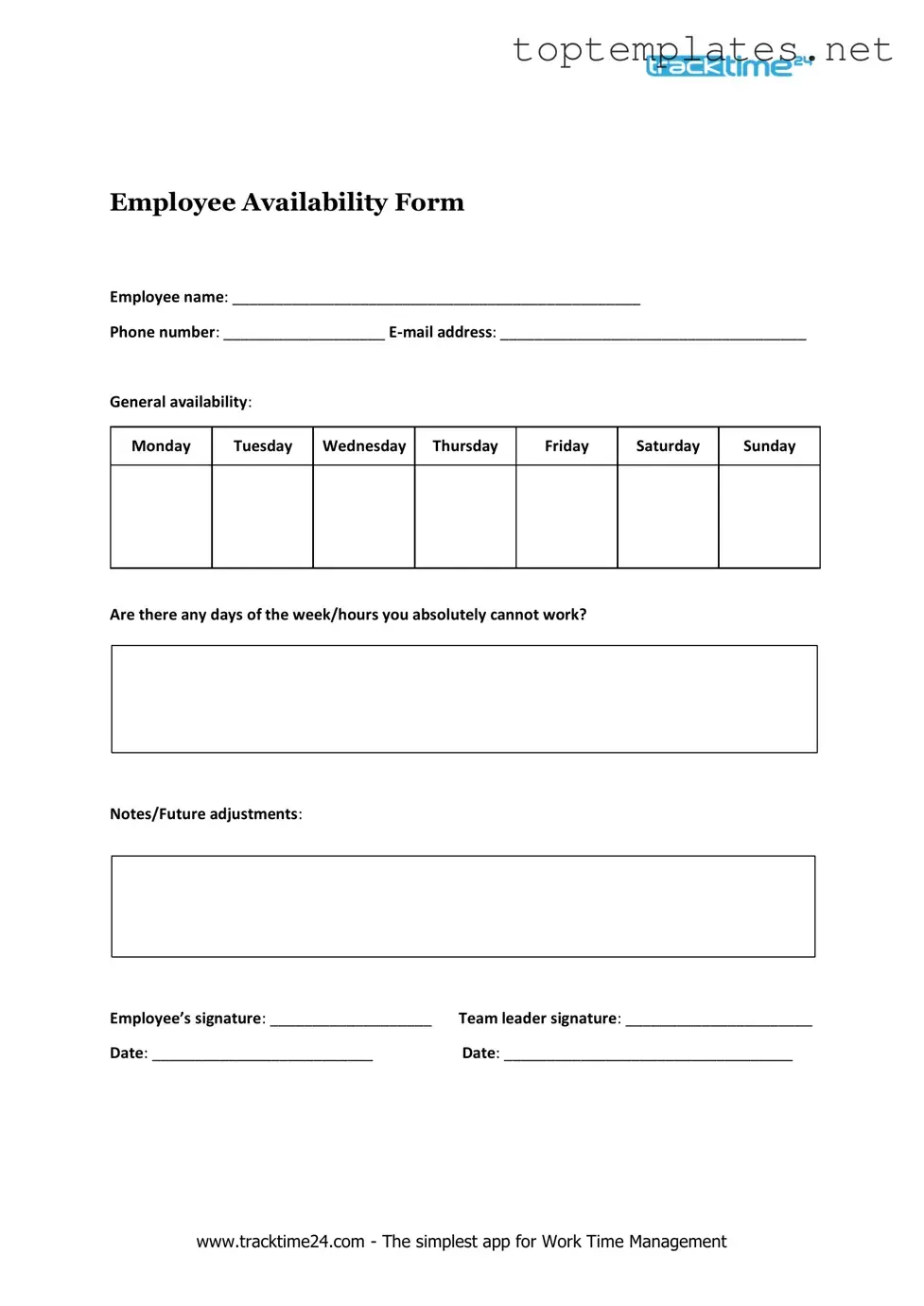What is an Employee Availability Form?
An Employee Availability Form is a document that employees use to inform their employer of the times they are available to work. This form helps in planning work schedules in alignment with employees' personal commitments, ensuring smooth operations and satisfied workforce.
How do I submit my Employee Availability Form?
Submission processes can vary from one company to another. Generally, you can submit your Employee Availability Form directly to your manager or the human resources department. Some businesses may use digital platforms or internal systems for electronic submissions. Be sure to follow the specific instructions provided by your employer.
Can I change my availability after submitting the form?
Yes, changes to your availability can usually be made after submitting the form. However, it is important to communicate these changes as soon as possible, giving your employer adequate time to adjust work schedules. Keep in mind, frequent changes may not always be accommodated due to operational requirements.
Is filling out an Employee Availability Form mandatory?
While policies may vary, most employers require the completion of an Employee Availability Form to efficiently manage work schedules and ensure staffing needs are met. Failing to submit the form could result in scheduling conflicts or missed shifts, affecting both the employee and employer negatively.
What happens if my availability changes due to an emergency?
In instances of emergencies leading to a sudden change in availability, employees are encouraged to notify their employer as soon as possible. Most employers understand that emergencies can arise and will work with you to adjust schedules accordingly, though notification policies may differ.
Who has access to the information I provide on the Employee Availability Form?
The information provided on your Employee Availability Form is typically accessed by your direct manager, the human resources department, and anyone involved in the scheduling process. Companies are bound by privacy laws to ensure that this information is handled confidentially and is only used for scheduling and employment purposes.

